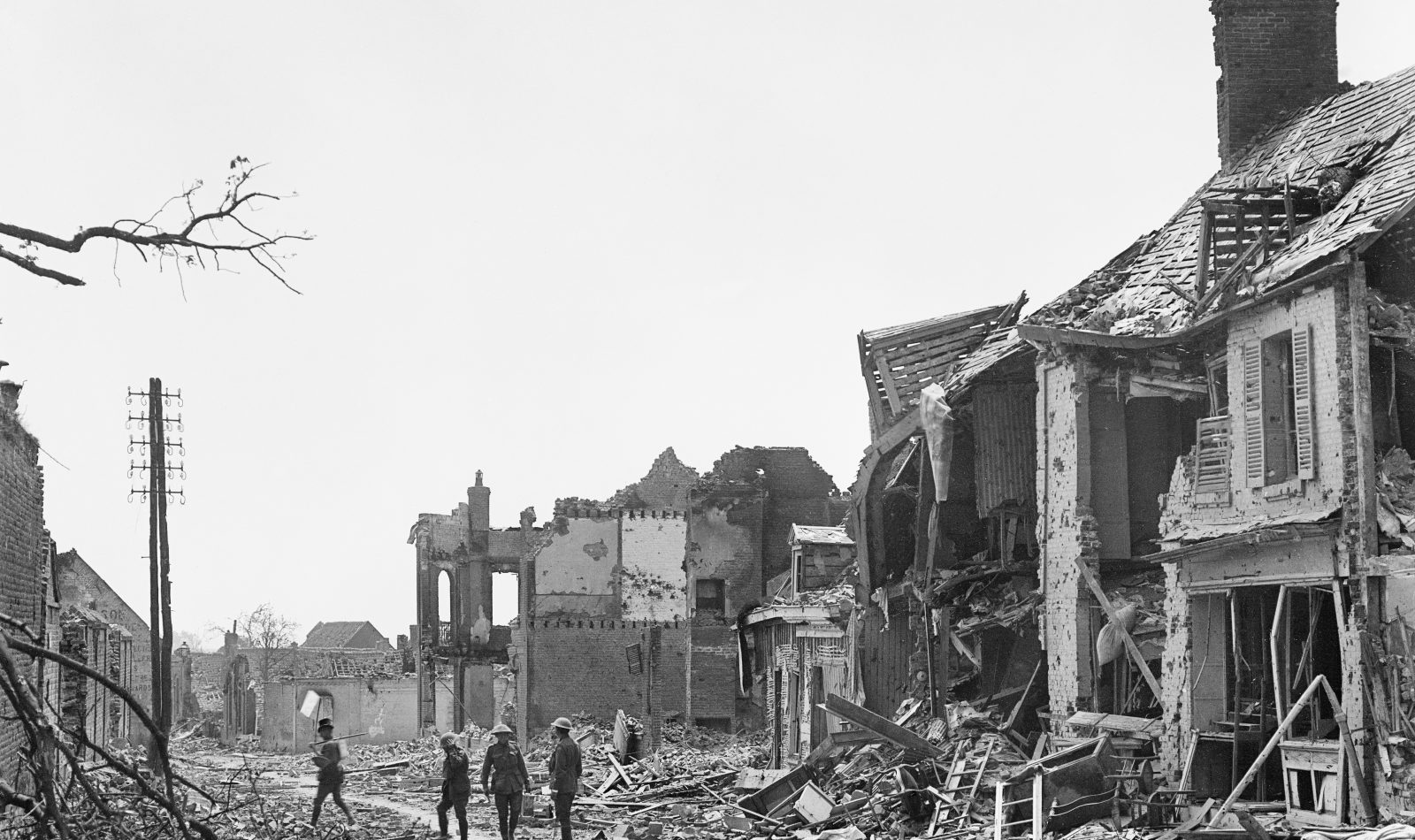
History
Back to NewsroomThe Battle of Villers-Bretonneux

“Perhaps the greatest individual feat of the war – the successful counter-attack by night across unknown and difficult ground, at a few hours’ notice, by the Australian soldier”
Brigadier-General George Grogan, 23rd British Brigade
When a massive German offensive swept across northern France in March 1918, it seemed for a time that German troops might reach the Channel coast. The Australian Corps, most of whose infantry was concentrated in the area around Messines in Flanders, was spared the bloody fighting of the offensive’s opening days but was soon sent south to plug gaps in the disintegrating British line.
In late March and early April, soldiers of the Australian Imperial Force (AIF) fought a series of difficult defensive battles, at Hébuterne, Dernancourt, Morlancourt, Villers-Bretonneux, Hangard Wood and Hazebrouck, that are largely forgotten today. Just one name in that list stands out. Villers-Bretonneux was the scene of fighting on 4 and 5 April when Australian and British troops repelled a determined German attack. Three weeks later the Germans made a second attempt. With the vital British transport hub at Amiens less than 20 kilometres away, Villers-Bretonneux was a significant prize. From there, Amiens could be brought under artillery fire, and if the German advance continued, taken by infantry.
The Germans struck at dawn on 24 April with gas, artillery, infantry and tanks – the first German use of this weapon to support an attack. Facing them were, in the words of senior British officer Sir Henry Rawlinson,
“young boys … under fire for the first time”
shaken by the bombardment and unnerved by the sight of tanks emerging from the morning mist. Villers-Bretonneux was soon in enemy hands.
No British counter-attack succeeded in dislodging them and as the day wore on the situation grew increasingly dire. In the afternoon Rawlinson insisted ‘we must get it back whatever happens’. The senior Australian commander in the area, Lieutenant Colonel Harold ‘Pompey’ Elliott, resolved to counter-attack as soon as possible, but hours passed as British attempts to retrieve the situation failed. All the while the Germans strengthened their newly won positions and were pushing out beyond the town.
During the afternoon the Australian 13th Brigade made an eight-mile march from their billets north of the Somme, joining the 15th Brigade outside Villers-Bretonneux as officers planned their assault. William Glasgow’s 13th Brigade would advance from the south, Pompey Elliott’s 15th from the north, linking up on the eastern side of the town. Elements of the 14th British Division would follow the Australians, engaging Germans caught in the pincer. It was a risky gambit. Infantry had to make a series of complex manoeuvres, advance and link-up in the dark. For the 13th Brigade this was to be done over unfamiliar ground without artillery support, as no one was sure where the German positions were. Australia’s Official Correspondent, Charles Bean, who witnessed almost every major AIF action on the Western Front, reflecting on what the 13th Brigade was trying to achieve, recorded in his diary: ‘I don’t believe they have a chance … I scarcely think it will come off.’
To the north, a 59th Battalion veteran from the 15th Brigade considered it ‘an almost impossible proposition.’ Many others shared his concern.

Elliott made sure that the men destined to make the assault got a drink of hot tea, and as one soldier recalled, ‘plenty of hot stew, as much as we could stuff into us.’ Former school teacher, now 60th Battalion stretcher bearer, David Whinfield, wrote ‘Since 10 last night we have been rigged up already to march off to support and now it is to counterattack for some ground lost by the Tommies this morning … It is a terrible time … Nerves are being shredded … it is too much for mortals.’ Whinfield steeled his nerves and when the hour came, distinguished himself. For his ‘gallantry and utter disregard for personal safety … continuing to rescue, dress, and carry wounded to the aid posts … despite the fact that the enemy barrage of Artillery and Machine Gun fire was intense’, Whinfield received the Military Medal.
To the south of Villers-Bretonneux the 13th Brigade commenced their attack at 10:10pm and were quickly held up by heavy machine gun fire from nearby woods they believed cleared. Lieutenant Cliff Sadlier and Sergeant Charlie Stokes led a party into the trees to deal with them, an action for which Stokes received the Distinguished Conduct Medal and Sadlier the Victoria Cross. The attack continued and some of the Brigade were almost on their final objective when the surviving officers elected to fall back and consolidate a position south of the town centre.
To the north, after a delay of 2 hours, the 15th Brigade commenced their attack at midnight. As they moved to the start line, the 15th Brigade, said one observer, were ‘tugging and straining at the leash’. Many realised that in a few hours it would be the third anniversary of the Anzac landings. They were eager to show themselves equal to the occasion. As they advanced, the 59th Battalion’s forward troops came under machine gun fire. They were ordered to charge. The tension of the long day released, the Australians sprang forward with a terrifying roar that swept along the line. The Germans were overwhelmed, the Australians advanced through machine gun and small arms fire deep into enemy territory. It was, said Pompey Elliott, ‘a soldiers’ fight’ decided by the courage of junior officers and their infantrymen.
Finding no sign of the 13th on the other side of Villers-Bretonneux, the 15th Brigade’s officers stopped their advance on the Le Hamel road. The Australians had not been able to link up, but by dawn on Anzac Day it was clear that they had achieved a considerable success. As the sun rose elements of the 57th Battalion began moving towards Villers-Bretonneux from the northeast, clearing Germans from the town and handing dozens of prisoners to British troops then beginning to come forward. Gaps between the Australian positions outside the town were closed and on 27 April the 60th Battalion fought a difficult and costly action to straighten the line. A German counterattack was broken up before it could begin, and the front grew quiet.
At Villers-Bretonneux the Germans were denied an important objective, ending what one historian called ‘the dangerous thrust to Amiens.’ General Monash wrote a week after the battle that he considered the attack ‘the finest thing yet done in the war, by Australians or any other troops.’ It cost the 13th Brigade 1009 casualties and the 15th a further 455, and remains one of the AIF’s most well-known actions. After Villers-Bretonneux the German divisions on the Somme front went on the defensive, never to regain the initiative.